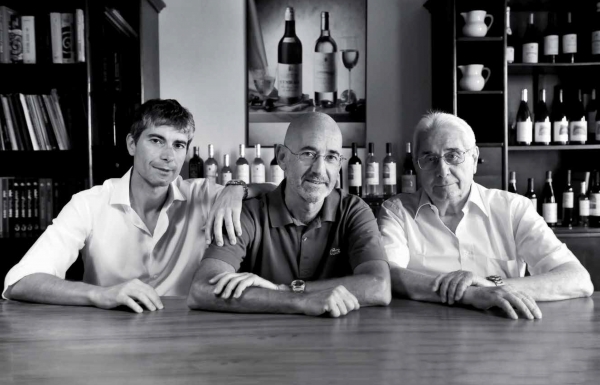The Custoza di Cavalchina, a simple and mysterious wine, easy to enjoy
- E_CITTA
- M_FOOD_WINE
- M_PRODOTTI_TIPICI
- T_GENNAIO
- T_FEBBRAIO
- T_MARZO
- T_APRILE
- T_MAGGIO
- T_GIUGNO
- T_LUGLIO
- T_AGOSTO
- T_SETTEMBRE
- T_OTTOBRE
- T_NOVEMBRE
- T_DICEMBRE
- TESORI_NASCOSTI
Luciano lives and works in Sommacampagna in his family's farm and and winery. Luciano is a chemical engineer who was also a skipper. He is a ski instructor and loves riding is bicycle. When he has some free time he comes to Malcesine.
Luciano definisce Malcesine una cerniera.
"Malcesine is a connection point for Luciano. I feel in the plain when I'm in Bardolino, I feel in the mountains when I'm in Riva del Garda. Malcesine stands between the two. I am a ski instructor and a sailor, I can have both mountain and water in Malcesine, a balance that I've never found anywhere else."
Cavalchina farm and winery and the Custoza
My grandfather Luciano founded the winery in 1948: he was the first to write "Custoza" on a bottle of white wine in 1962.
When he died, the winery was closed for a couple of years and then my father reopened with the intention to achieve a high positioning.
In the meantime, Custoza was recognized as a PDO wine in 1972.
Luciano arrives at the winery in 1986.
When I first came, the winery was a secondary activity for my family, it was a hobby, we produced wine for the Christmas presents. My family used to work in the industry sector. At first, I didn't want to devote too much time to this job but then, the cultural aspect and the possibility of expression of this activity conquered me.
The winery has developed a lot from the Eighties to the present day: we have 100 hectares of land and we produce 700.000 bottles of wine a year.
What does conquered you of this activity?
I have my own idea of wine and I like to give wine the personality and the cultural touch it deserves. I'm interested in connectng the product to its land, to the shape of the hills.
Wine originates from the weather and the soil, but most of all, from the personal intention to highlight some of its inner aspects instead of others. The cultural aspect is fundamental for wine: nature gives you something that you have to interpret.
The bond with the land is very strong, being born where wine is produced is really important.
I could produce a good Chianti, if I wanted to, but I coudn't give it an identity, something more. For me producing just a good wine is not enough.
What makes the difference?
Wine has to express something, it has to tell something.
I produce Custoza wine and in doing so I tell you about Custoza in wider terms, not just about white wine. I give you something that I would be glad you remember.
The best wine is the one you remember for a long time: a wine with its personality.
Cavalchina is a simple, mysterious, pedagogical wine. Its complexity can be unnoticed as Cavalchina is a generous wine, easy to drink. You can drink it easily, when you are having company, for a lunch with some friends or with the family.
It is also a wine offering positive sensations and scents. It's a large spectrum wine, easy to pair with food and to present in many different situation. It is flexible, easy, it teaches the drinker about stucture and complexity. Ours is an well-behaved drinker who drinks with caution. Cavalchina is extreme and balanced at the same time.
What kind of wine do you produce?
Custoza, Chiaretto and Bardolino. Apart from PDO Custoza, we also produce a Custoza Superior called Amedeo and a Bardolino Superior called Santa Lucia: these are full-bodied, complex wines able to keep their qualities unaltered over the years. They are very good, even if they are appreciated only by few.
What kind of wine gives you more satisfaction?
I love white wines. Amedeo is the one giving me more emotions, especially if it a 4-5 year aged bottle. It's the right kind of wine to enjoy during special occasions.
Thanks to its persistent acidity, Cavalchina reaches its aromatic peak during the springtime of the year following its production and keeps its qualities unaltered for at least two years. Amedeo is at its best after two years and can keep its quality in the following three years.
The handcrafted activity made at the winery is a fundamental factor, especially in some specific aspects such as, how the lees are treated, oxidation, the process of wine pressing, how polyphenols are transfered: old procedures with new techniques.
New possibilities can be created through long lasting maceration, removing the sulfites.
